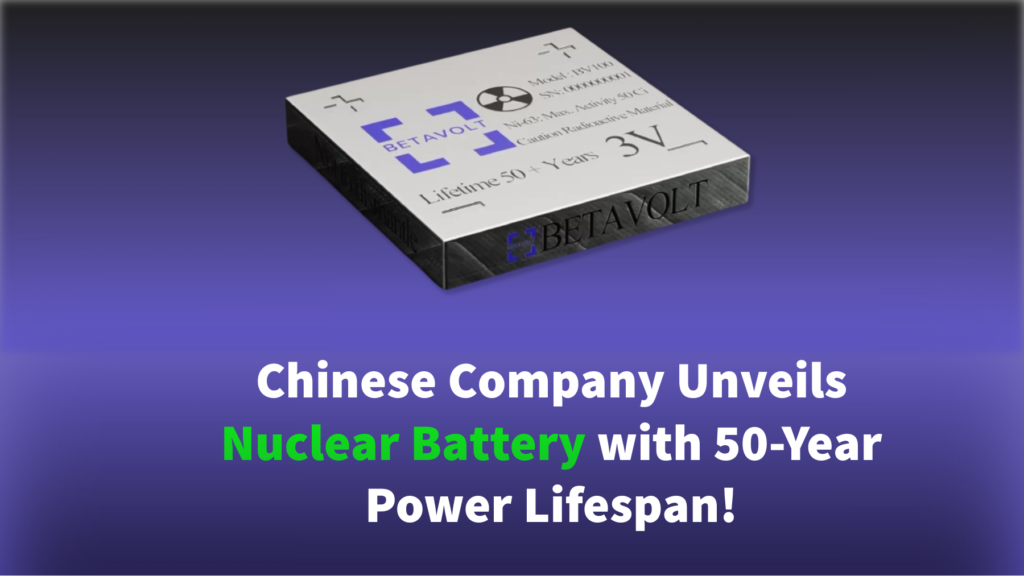Betavolt, a Chinese startup, has made headlines with its claim of creating the world’s first “micro-atomic energy battery.” This tiny battery, smaller than a coin, promises 50 years of power without needing a recharge. Sounds amazing, right? But before you start dreaming of self-powered cities, let’s delve deeper and see if this technology delivers on its promises.
The core idea: Betavolt’s battery uses nickel-63, a radioactive isotope, as its fuel. As nickel-63 decays, it emits beta particles. These particles whiz through a specially designed diamond, knocking loose electrons and creating an electric current. It’s like having a mini nuclear power plant in your pocket, except way safer (beta particles are easily stopped by materials like aluminum).
The good stuff:
Lifespan: 50 years! No more scrambling for chargers. Imagine powering sensors in remote areas or medical implants that never need replacements.
Compact: Smaller than a coin, making it ideal for tight spaces like satellites or pacemakers.
Rugged: No moving parts, so it can withstand harsh environments.
Safe: Beta particles pose minimal radiation risk.
But hold on, there are some questions:
Scalability: The current version produces just 100 microwatts, enough for a low-power sensor but not much else. Scaling it up for higher power needs might be tricky.
Electricity generation: How exactly do they convert beta particles into usable electricity? This process isn’t entirely clear yet.
Steady power: Decay is random, so wouldn’t the power output fluctuate? We need to know if they can ensure a stable current.
Cost: Nickel-63 is rare and requires special reactors to produce, making it potentially expensive.
Weight: While compact, a high-power battery might still be heavy due to the shielding and other materials needed.
Is it all hype?
Experts have mixed opinions: Some praise the innovation and long lifespan, while others highlight the challenges like scalability and cost. While it might not be powering our cars anytime soon, the technology holds promise for specific applications like low-power sensors in remote areas or powering medical devices.
Remember: It’s early days for this technology. More research and development are needed before we can truly assess its potential. However, Betavolt’s tiny nuclear battery definitely sparks our imagination and opens doors to exciting possibilities for the future of energy.
Bonus: The article also mentions a Redditor’s comment raising concerns about the accuracy of some information. It’s always good to be critical and consult multiple sources before drawing conclusions.
I hope this blog post provides a balanced and informative overview of Betavolt’s technology, avoiding overly technical jargon and focusing on the key points and questions surrounding it.
